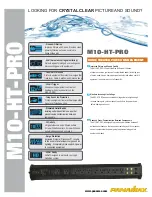
2-44
ALPS Advanced Line Protection System
GE Power Management
2.3 PROTECTION SETTINGS
2 CALCULATION OF SETTINGS
2
With HOLDSENSE set to CC, the recloser will wait for a contact closure at the inhibit input to stop the hold timer (Protection
Setting 1816: HOLDTIME) and allow the recloser to provide a close output to the breaker. If no contact closure occurs dur-
ing the hold time, then the recloser will go to lockout when the hold time expires. In other words, the hold timer will be
started only if there HOLD contact input is open, and will be stopped only if the HOLD input contact closes before the hold
time expires.
With HOLDSENSE set to CO, the recloser will wait for a contact opening at the HOLD input to stop the hold timer (Protec-
tion Setting 1816: HOLDTIME) and allow the recloser to provide a close output to the breaker. If no contact opening occurs
during the hold time, then the recloser will go to lockout when the hold time expires. In other words, the hold timer will be
started only if HOLD contact input is closed, and will be stopped only if the HOLD contact input opens before the hold time
expires.
1818: SYNCCHECK - Synch Check Supervision Select
SYNCCHECK can be set to YES or NO and establishes if synchronism check is to be used during any of the selected
reclosures. The synchronism check function includes angle supervision, slip frequency supervision, and voltage difference
supervision, as well as bus and line voltage supervision.
1819: CLOSEANG - Closing Angle
CLOSEANG establishes the closing angle for which the synchronism check function will allow the recloser to produce an
output to close the breaker. The CLOSEANG setting has a range of 0 to 75 degrees. Select an angle suitable to the appli-
cation.
1820: SLIPFREQ - Slip Frequency
SLIPFREQ establishes the slip frequency for which the synchronism check function will allow the recloser to produce an
output to close the breaker (provided the closing angle requirement is met). The SLIPFREQ setting has a range of 0.1 to
5.0 Hz. Select a slip frequency suitable to the application.
1821: BUSLINE - Bus or Line Voltage
BUSLINE can be set to BUS or LINE and identifies the source of the three phase voltage (bus or line) used to supply the
protective relay system. This allows the synchronism check function to ascertain which is bus potential and which is line
potential.
1822: SYNCPHASE - Voltage used by SYNCHECK
SYNCPHASE can be set to VA, VB, VC, VAB, VBC or VCA and establishes which phase or phase-pair bus and line voltage
is to be used by the synchronism check function. Select a setting that matches the synchronism check voltage input to the
relay system.
1823: SYNCHOLD - SYNCHECK Hold Time
SYNCHOLD sets the time that the recloser will wait for a synchronism check input to be applied. If the sync check input is
not applied during this time, the recloser will go to lockout when the time delay ends. The range of the SYNCHOLD time
setting is 1 to 100 seconds. Make a setting that is suitable to the application.
1824: SP1PDELAY2 - Supervise Second Reclose (Single Phase Tripping models only)
SP1PDELAY2 can be set to YES or NO and establishes whether the first three-pole reclose (if selected) following an initial
single-pole trip will be supervised by the synchronism check function.
1825: SP1PDELAY3 - Supervise Third Reclose (Single Phase Tripping models only)
SP1PDELAY3 can be set to YES or NO and establishes whether the second three-pole reclose (if selected) following an
initial single-pole trip will be supervised by the synchronism check function.
1826: SP1PDELAY4 - Supervise Fourth Reclose (Single Phase Tripping models only)
SP1PDELAY4 can be set to YES or NO and establishes whether the third three-pole reclose (if selected) following an initial
single-pole trip will be supervised by the synchronism check function.












































